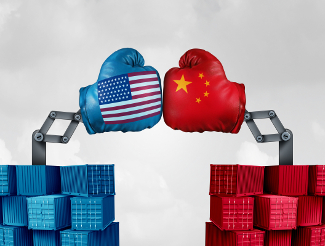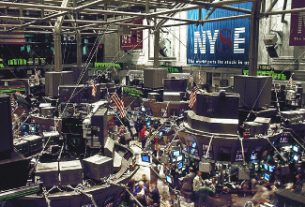By now even the most optimistic traders on Wall Street have had to resign themselves to the fact that the trade war with China won’t abate anytime soon. Far from a quick resolution, it seems that every month brings yet more news of increased escalation. Last week it was President Trump’s decision to raise the existing tariff rates on Chinese imports, news that sent stock exchanges tumbling.
Trump’s move came as a response to China’s retaliatory tariffs on US goods, with China raising its tariff rates from 5% to 10%. In response, Trump decided to raise tariff rates on existing Chinese imports from 25% to 30%, with the rates for planned tariffs on remaining Chinese goods rising from 10% to 15%. The only good news about those tariffs is the fact that most of the goods that would have been subject to tariffs starting September 1 will now remain tariff-free until December 15, a move intended to keep from completely destroying Christmas shopping.
Stock markets reacted as could be expected, with the Dow Jones down over 600 points on the day. Optimistic traders have tried to push the Dow higher today on President Trump’s assertions that China reached out to him for a trade deal, but that seems like just wishful thinking. The reality that should be setting in is that we’re in for a long, protracted trade war that may very well last for years.
With the full effects of the trade war yet to hit most American consumers, the worst is yet to come. Once the full range of Chinese imports is subject to tariffs, American households will see a huge hit to their pocketbooks. The average household can expect to spend about $1,000 more per year due to this new round of tariffs. And that money just gets collected by the government and spent on other things, like providing handouts to the farmers whose exports to China have dropped to nearly zero as a result of the trade war.
American households aren’t made of money, and they’re already heavily indebted. Having to pay an extra $1,000 every year means they’ll have to make up for that by cutting back on spending elsewhere, and that could cause a significant slowdown in the economy.
The effect that this will have on the economy in the present and in the future can’t be overstated, and it will likely take years for the damage done by these tariffs to be undone, assuming that they’re eliminated at some point in the future. But in a worst-case scenario we could be looking at years or decades of trade conflict with China, higher tariff rates, and a complete reworking of the international trade system.
If that’s the case then 600-point stock market drops will look mild in comparison to what’s in store for us in the future. Investors who understand that and who understand the importance of getting out of stock markets before they crash know that they will need to protect their assets before it’s too late. That’s where assets like gold and silver come in, which have protected investors’ assets for centuries.
Those who invested in gold and silver during the last financial crisis were handsomely rewarded for their foresight, and saw their portfolios maintain value when most other investors booked massive losses. Now’s the time for gold and silver to shine once again, as the heightening trade war threatens to take down the economy and deal most investors another very nasty blow.
This article was originally posted on Goldco.





